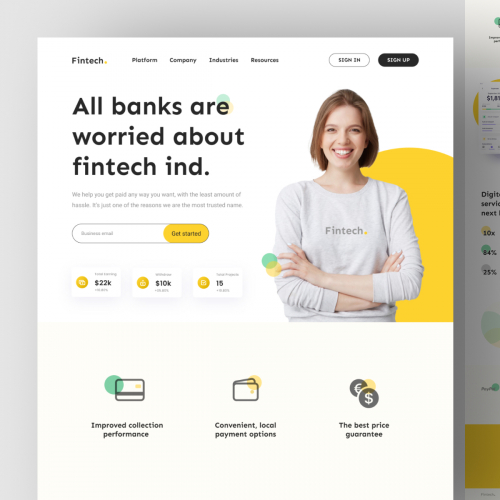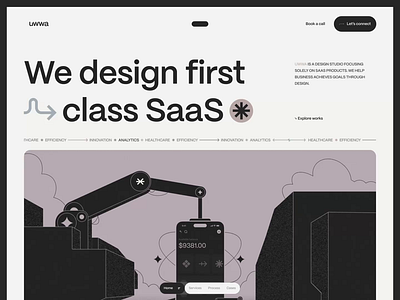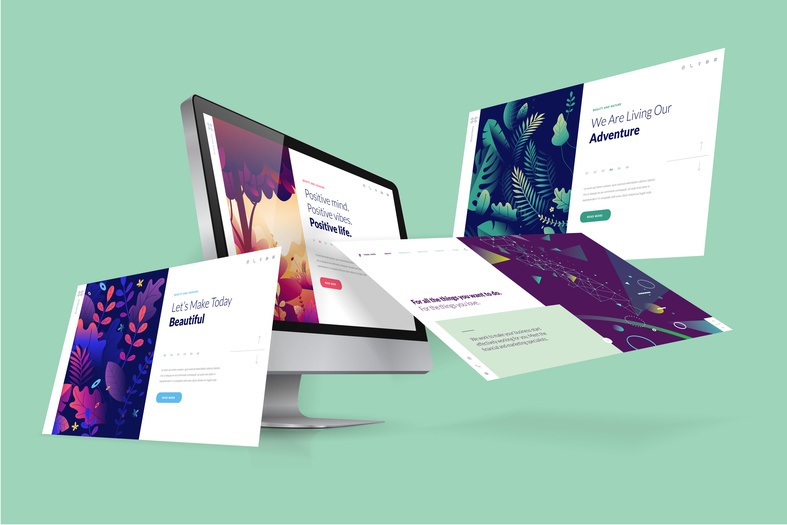Website Design Guidelines to Create a Lasting First Impression
Website Design Guidelines to Create a Lasting First Impression
Blog Article
Necessary Concepts of Website Style: Creating User-Friendly Experiences
By focusing on customer demands and choices, developers can promote interaction and contentment, yet the effects of these concepts extend beyond plain functionality. Comprehending exactly how they intertwine can substantially influence a website's overall effectiveness and success, motivating a more detailed exam of their individual functions and collective influence on individual experience.

Significance of User-Centered Design
Focusing on user-centered layout is important for developing reliable websites that fulfill the demands of their target audience. This approach places the individual at the leading edge of the style procedure, guaranteeing that the site not only operates well but additionally reverberates with customers on a personal degree. By comprehending the individuals' goals, preferences, and habits, designers can craft experiences that foster interaction and contentment.

Furthermore, embracing a user-centered style philosophy can bring about improved availability and inclusivity, providing to a varied audience. By thinking about different customer demographics, such as age, technical proficiency, and social backgrounds, designers can produce web sites that are welcoming and useful for all.
Ultimately, prioritizing user-centered style not just boosts customer experience however can also drive essential service results, such as boosted conversion rates and consumer loyalty. In today's competitive digital landscape, understanding and prioritizing customer requirements is a vital success variable.
Intuitive Navigation Structures
Effective web site navigating is often a crucial element in enhancing individual experience. User-friendly navigation frameworks allow customers to locate info swiftly and efficiently, reducing irritation and enhancing interaction. A well-organized navigating food selection should be straightforward, rational, and consistent across all web pages. This allows users to anticipate where they can find details web content, therefore advertising a smooth browsing experience.
To create instinctive navigating, developers must prioritize clarity. Labels need to be descriptive and familiar to users, preventing lingo or uncertain terms. An ordered structure, with key categories resulting in subcategories, can better assist customers in comprehending the connection in between different sections of the website.
Furthermore, including aesthetic cues such as breadcrumbs can lead users through their navigation course, permitting them to quickly backtrack if required. The incorporation of a search bar likewise enhances navigability, providing individuals route access to content without needing to browse via numerous layers.
Responsive and Flexible Designs
In today's digital landscape, making sure that web sites work flawlessly throughout different devices is vital for individual satisfaction - Website Design. Receptive and flexible formats are two crucial techniques that allow this performance, catering to the varied series of display dimensions and resolutions that individuals may come across
Receptive formats employ fluid grids and flexible photos, enabling the website to immediately readjust its components based upon the display dimensions. This strategy offers a regular experience, where material reflows dynamically to fit the viewport, which is specifically helpful for mobile customers. By using CSS media queries, developers read this post here can develop breakpoints that maximize the layout for different gadgets without the demand for separate layouts.
Adaptive formats, on the other hand, use predefined formats for particular display dimensions. When a user accesses the website, the server finds the tool and offers the appropriate layout, guaranteeing an optimized experience for varying resolutions. This can bring about much faster loading times and improved efficiency, as each format is customized to the tool's abilities.
Both adaptive and receptive styles are crucial for enhancing customer engagement and complete satisfaction, eventually contributing to the web site's overall efficiency in satisfying its goals.
Constant Visual Pecking Order
Developing a consistent visual power structure is crucial for assisting customers with an internet site's content. This principle makes certain that information is offered in a manner that is both engaging and user-friendly, allowing users to easily understand the product and browse. A distinct hierarchy uses various layout elements, such as size, contrast, shade, and spacing, to produce a clear distinction between various types of content.

Additionally, consistent application of these aesthetic cues throughout the internet site cultivates knowledge and trust. Customers can rapidly find out to identify patterns, making their interactions more reliable. Eventually, a solid visual hierarchy not only boosts individual experience however likewise enhances general site use, encouraging deeper involvement and facilitating the desired actions on a website.
Ease Of Access for All Individuals
Accessibility for all customers is an essential element of internet site layout that ensures every person, no matter of their capacities or disabilities, can involve with and gain from online content. Creating with access in mind involves implementing methods that suit varied customer demands, such as those with aesthetic, auditory, motor, or cognitive problems.
One vital standard is to stick to the Internet Web Content Access Standards (WCAG), which provide a structure for producing accessible digital experiences. This includes using enough color contrast, supplying message choices for images, and making sure that navigation is keyboard-friendly. Additionally, utilizing receptive style methods makes certain that internet sites work effectively across different devices and screen sizes, better boosting accessibility.
An additional important aspect is making use of clear, concise language that stays clear of lingo, making material understandable for all individuals. Engaging individuals with assistive innovations, such as screen visitors, needs careful focus to HTML semiotics and ARIA (Obtainable Abundant Net Applications) functions.
Inevitably, prioritizing ease of access not only meets lawful obligations however additionally broadens the target market reach, promoting inclusivity and boosting individual complete satisfaction. A dedication to accessibility mirrors a devotion to creating equitable digital environments for all users.
Conclusion
To conclude, the essential concepts of internet site design-- user-centered layout, intuitive navigating, receptive designs, regular aesthetic pecking order, and availability-- jointly add to the production of user-friendly experiences. Website Design. By focusing on user requirements and ensuring that all individuals can properly engage with the site, developers improve usability and foster inclusivity. These principles not just enhance user satisfaction yet likewise drive favorable company outcomes, eventually demonstrating the critical value of thoughtful internet site layout in today's digital landscape
These approaches provide important understandings right into user assumptions and pain points, allowing designers to customize the site's features and content appropriately.Reliable site navigation is often a crucial factor in improving individual experience.Establishing a constant aesthetic pecking order is essential for guiding customers through an internet site's material. Ultimately, a solid visual pecking order not just boosts user experience however also boosts general site use, motivating deeper engagement and helping with the preferred activities on a site.
These concepts not just her latest blog boost user contentment however additionally drive favorable service outcomes, eventually demonstrating the critical relevance of thoughtful web site design in today's digital landscape.
Report this page